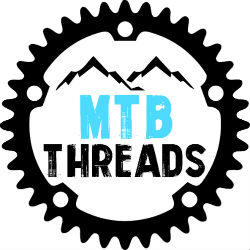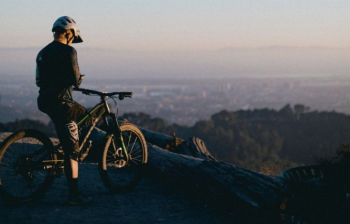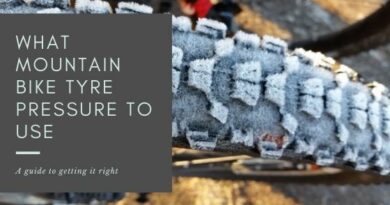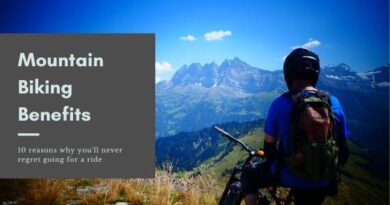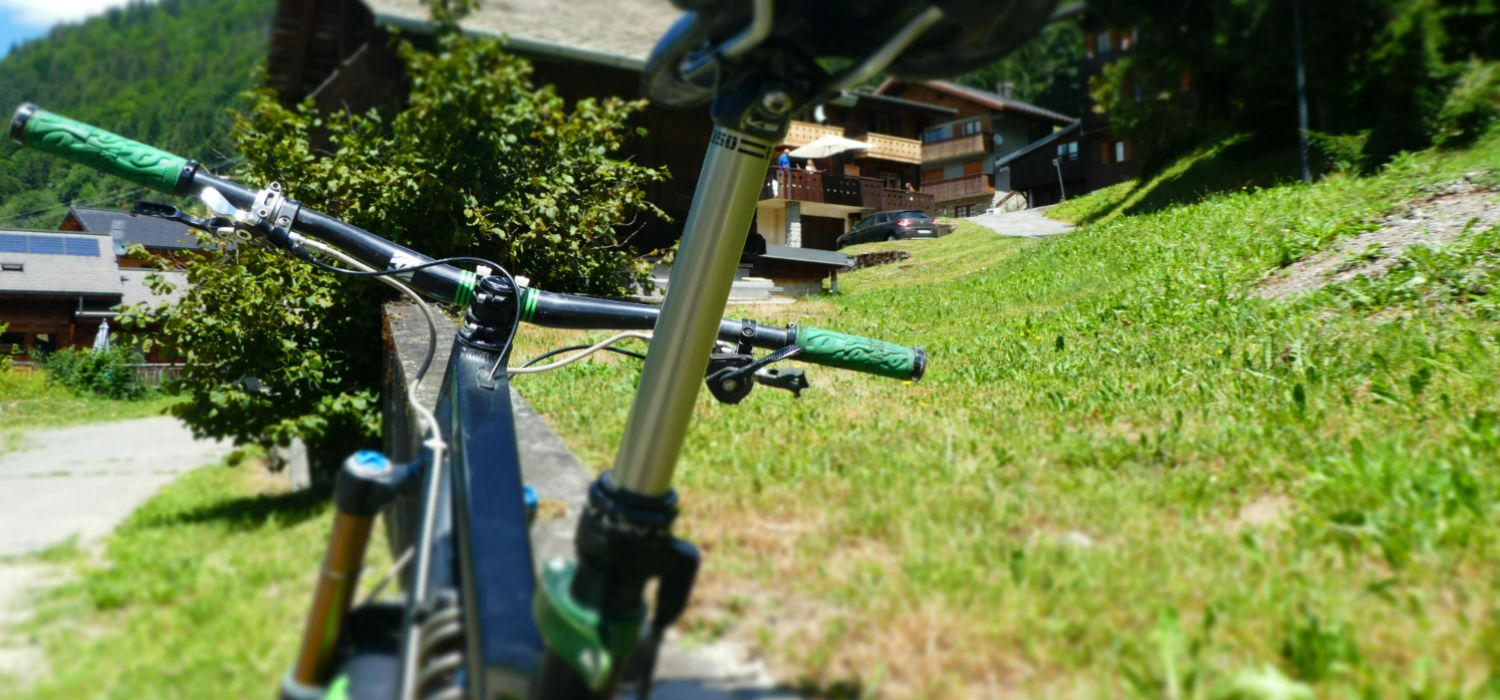Bike Fitting Guide: Get right size bike
Buying a bike that doesn’t fit properly will have a negative impact on your enjoyment. This means you won’t want to ride it very often, if at all. This is obviously a bad thing, and a waste of money. Here is my bike fitting guide. With this information you will be able to make sure your bike fits you perfectly.
Bike Fitting Guide - How to get it right
The right bike that matches your measurements and your riding style will be one you will love riding. A bike that doesn’t fit, will lead to poor comfort, inefficient riding, pain and reduced range (as you wan’t want to ride it).
To make sure your bike is right for you, whether you are looking for a new one, or just want to make sure the one you have is perfect, you can visit your local bike shop. They should be able to advise you on what to buy or how to adjust your current bike.
However, if you are buying online, there are a few things you need to know before committing to the check out button.
Bike Sizing
Although this is a mountain bike website, I won’t discriminate :). Different types of bikes are sized differently.
- Mountain bikes come in standard sizes (S, M, L) and are generally quite similar across the brands. For example, if you ride a medium Trek mountain bike, it’s likely (but not definite), that you’ll want a medium in other brands too.
- Road bikes can come in both standard (S, M, L) sizes and numerical sizes. Unlike mountain bikes, the same size across different brands can fit very differently. Also the number may not correlate to a common measurement, as this is not standardised. You might ride a size 54 Cannondale road bike, but a size 54 Diamondback road bike may feel totally different.
- Hybrid bikes are a mix of the two, with more forgiving sizing than elite road bikes, but not quite as flexible as the sizing of most mountain bikes.
Bike Fitting Guide: Fit Considerations
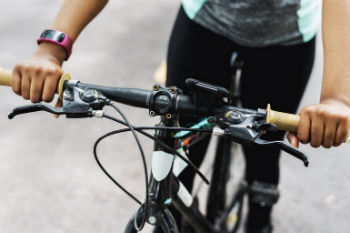
In this bike fitting guide I have outlined entry-level fit considerations you need to look in to for the perfect fit.
- Ability – It is important to set you bike up to match your current abilities. As your strength, fitness, flexibility and endurance improves, you can readjust the fit of your bike later.
- Have the correct frame size – If you don’t have the right frame from the beginning, you will struggle to make it comfortable no matter what adjustments you make to it.
- Make easy adjustments to existing components – You can make some easy adjustments with your bike’s existing components.These include the seat height, seat angle and front-and-back seat position.
- Identify components that you can swap – There are some components that can be changed to alter your bike’s fit. For example, a different length stem changes the location of the handlebars for a more comfortable riding position. It also changes your centre of gravity, either making it easier to climb or more stable on descents. Click here to learn about handlebars and stems.
- Check your cleat fit: If you like to clip in to your pedals, be aware that the placement of cleats on your bike shoes can also impact fit. If you set them too far forward, they can cause knee pain, Achilles discomfort, numbness or hotspots. If they are too far back, you won’t be getting the optimal power transfer from your muscles to the pedals.
Standover Height
You need to be able to straddle the crossbar with your feet flat on the floor.
When it comes to mountain bikes, you want a minimum of 2″ clearance between the tyres and the ground when you lift it. However, for bikes with suspension, 1 to 2″ is fine, as the suspension will compress when you sit on the bike. However, the amount of clearance is also affected by the slope of the top tube down toward your rear wheel. For example, if the slope is dramatic, you’ll likely have ample clearance no matter what size the frame is. Because of this, you can’t rely solely on standover clearance to determine if a bike fits.
For road and hybrid bikes, if the bike has a traditional straight top tube parallel to the ground, you should have about 1″ of clearance between the ground and tires when you lift the bike as you are standing over it.
Standover Height and online shopping
Most bike brand websites have sizing charts. You need to look for the standover height ranges, and compare that number to your inseam. Your inseam and the standover height should fall within the target ranges. (For example, if you have a 30” inseam, you’ll want a mountain bike bike with a 29 to 31” standover height.)
Check out the video below to see how to measure your inseam.
Upper Body
For a bike to fit well, knowing your standover height probably isn’t enough to ensure a great fit. A good second piece of data is the effective top tube (ETT) length.
ETT is the horizontal distance between the head tube and the seat tube. The correct ETT will help set you up to fine-tune your upper body position with smaller adjustments.
Looking at Your Upper Body Position
Ideally you should have a bike tech look at your body position on your chosen bike. But, you need to a riding position that will give you a modest amount of shock-absorbing bend in your arms without forcing you to reach too far to apply the brakes.
For mountain and hybrid bikes, the riding positions are often more upright and relaxed than road bikes. When riding mountain bikes, you spend more time is out of the saddle, so dialling in the perfect seated peddling position isn’t as important.
For road bikes, your torso will form a 45-degree angle with your hips, and a 90-degree angle with your arms. If you have tight hamstrings or short arms, you can change the stem to bring the handlebar closer and keep the strain off your back and shoulders.
Saddle Height
With the correct seat height, you have will be able to peddle more efficiently and powerfully,
To check your seat position, ask someone to hold the bike upright while you hop on the saddle. You should see a slight bend in your leg when it is in the bottom of the pedal stroke. This is true for all types of bike. However, if you get a dropper seat post on your mountain bike, your life will become a lot easier and more pleasant. Seriously, if you have never used one, you don’t know what your are missing.
Saddle Position
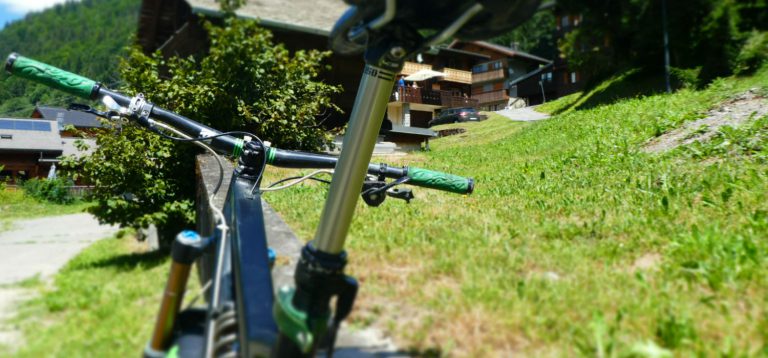
When your right foot is at the 3 o’clock position of the pedal stroke, your knee should be aligned over your front foot. When in a bike fitting session, the bike tech, will drop a plumb line from the bottom of your kneecap to see if it lines up with the ball of your foot and through the centre of the pedal. In this position, your shin will be tilted forward slightly.
To get this position right, you just need to adjust the position of your saddle by loosening off the bolts and sliding it forwards or backwards. Make sure your saddle isn’t tilted and is parallel with the ground.
Kid's Bikes
You may be tempted to buy a bike that your child will grow in to. This is understandable, but it is more important to them to have a bike that is comfortable that they want to ride.
As with adult bikes, you need to check the standover height. Whatever the top-tube style, look for about 2″–4″ of clearance.
Most kids’ bikes are designed so they ride in a more upright position. They should be able to sit comfortably and grip the handlebars with a slight bend in their elbows. Their legs should be slightly bent at the bottom of the pedal stroke.
What to you think?
I hope this has been helpful. Please let me know if there are any other important factors when it comes to bike fitting in the comments below.
